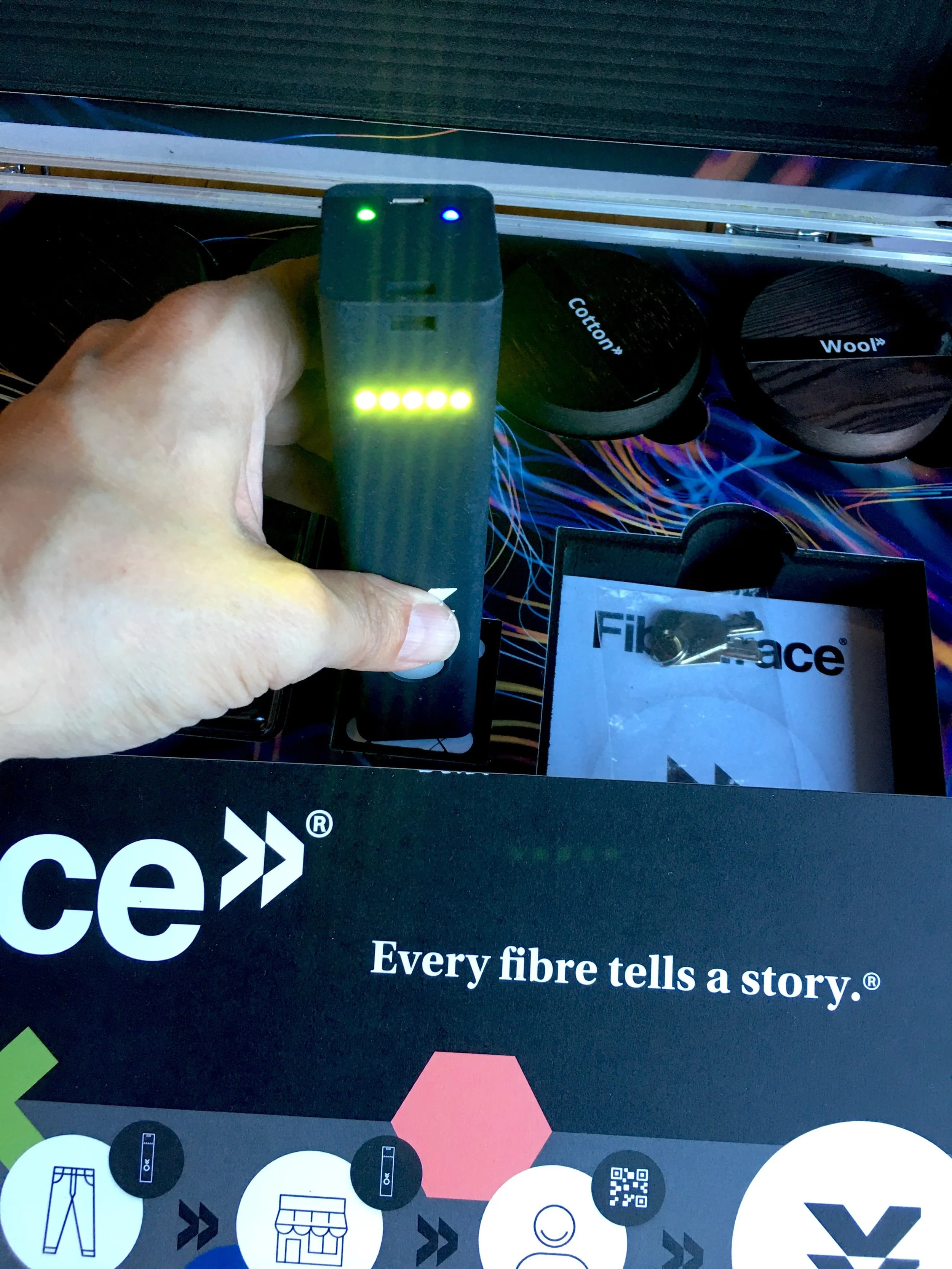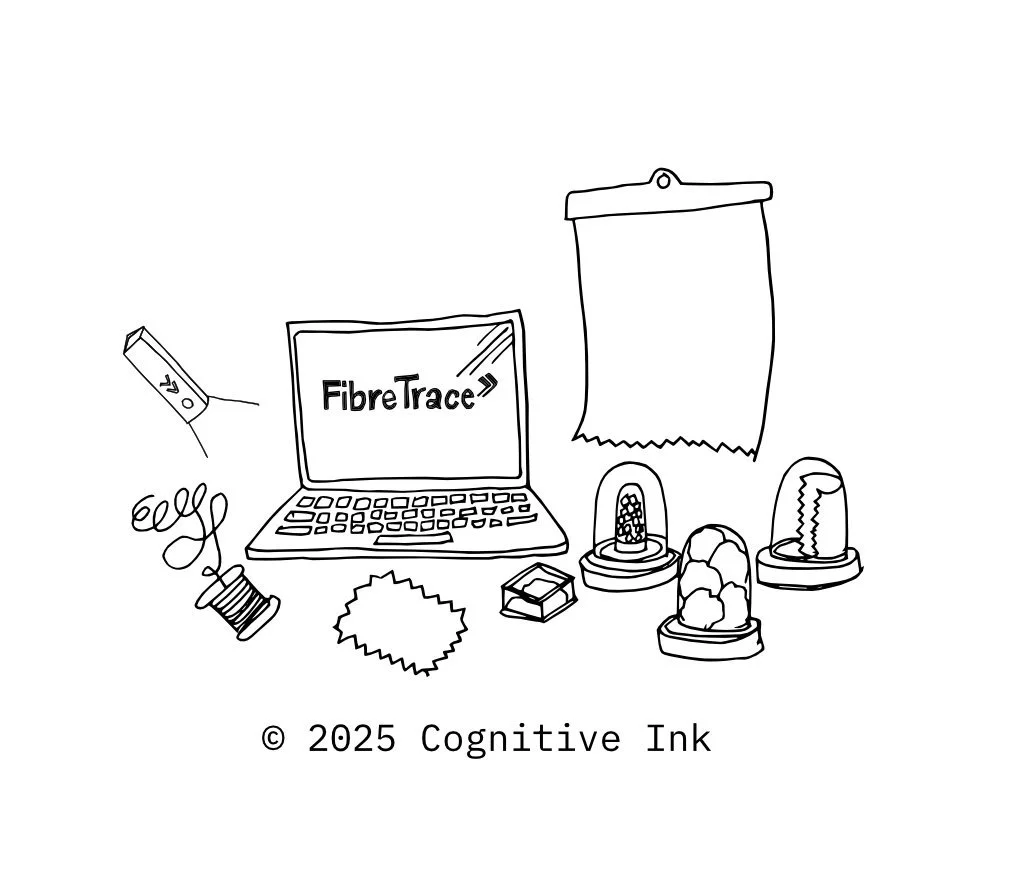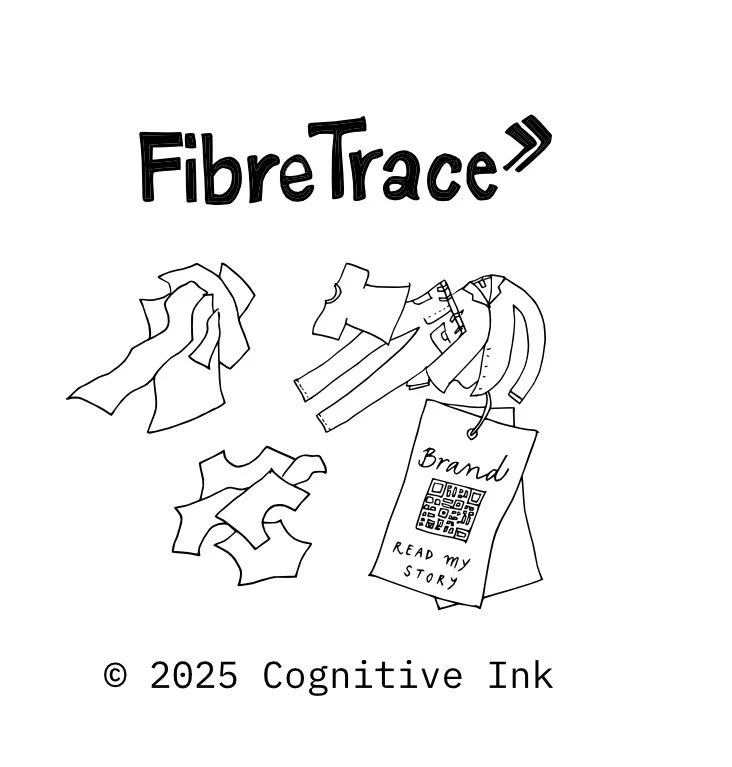Can I Trust My Fibre? Tracking Fibres Through a Global Textile Production Ecosystem with FibreTrace
With FibreTrace, we talked to some of the world’s biggest fibre producers, textile manufacturers and retailers to understand how to improve fibre traceability from source to store.
With FibreTrace, one of Australia’s mosts innovative fibre-tracking technology companies, we explored how to create a better fibre-tracking experience for users across the globe.
“Christopher and Anna took the time to thoroughly understand our business, the unique challenges our customer is facing, and really understood the brief to deliver an impressive, client first approach which resulted in a full physical and digital user journey, identifying clear opportunities for development to answer to customer needs, and supporting the establishment of an executive decision-making framework that will support our ongoing success as a transparency technology business that is so dependent on considered user design and experience. I look forward to the opportunity to work with them again in the future.”
Our work:
Increased customer engagement through research: The research process created new channels of feedback, new models of engagement and deeper links with key customers. The research both helped the organisation gain insight and also benefited core business opportunities.
Mapped the ‘un-mappable’: Mapping the global textile ecosystem puts focus on the complexity and interconnectedness of the modern textile system. The work highlighted organisational, legal, language, cultural and economic challenges that need to be supported in the design of FibreTrace’s products and services. Putting the end-to-end picture on a single map provided new clarity for the working team, FibreTrace leadership and investors.
Prioritising top opportunities: Using a prioritisation framework, we helped the FibreTrace team select a short-list of opportunities offering the biggest value-for-effort improvement across short, mid and long-term development timelines.
Bridging the gap between Front-end and back-end systems: By mapping both the customer-facing and back-of-house experiences, and where they interfaced, we showed where improvements to back-of-house systems and processes would benefit the customer-facing experiences.
Defined several strategic directions: Through the product, service and experience research, we helped define several strategic directions the business could take to grow, change or redirect focus.
Challenge
Where does the shirt you’re wearing really come from?
Most of us don’t think about the fibres that make our everyday clothes and textiles, but they must have come from somewhere, whether naturally sourced or man-made. And usually not just from one place, but many.
Everything you wear likely passed through dozens of steps, hundreds of hands, and many factories, situated all over the world. It’s not just a production process; it’s a textiles system.
This textile system has grown in complexity for centuries. It has shaped nations, started wars, and ended them; put people in servitude and taken them out of it. And for most of that time, its full extent of the system has remained opaque.
Some fibres have clear origins, others are more obscure, and some may be totally fraudulent. But only recently have governments, large brands and contentious customers exerted pressure to make the system more transparent.
Consumers and governments are focusing more on what goes into their textiles, who made them and where they are made. There are sanctions and restrictions being imposed on textiles sourced, or worked on, in places that do not accord with modern standards of labour or environmental protection.
But this transparency doesn’t happen at the stroke of a pen or flick of a switch. Suppliers must be identified and their links understood. Fibres flowing through the system must be dependably traced.
People have tracked fibre via paperwork for as long as there have been Purchase Orders, Shipping Labels, and Waybills. Fibres that travel across the world accumulate a series of documents stating their origin, contents and make-up.
But a paper-based tracking system is built on trust, not verifiable data. To the human eye, one strand of cotton looks much like another. There’s no way to tell what materials actually are once they’re separated from their labels.
Or is there?
That’s the exciting promise of FibreTrace, which offers a physical, additive trace technology that tracks them from their point of origin through the convoluted supply chain.
It’s verification based on validated science and carefully recorded data.
But there’s a catch.
It’s technically challenging and difficult to create a great experience for every organisation and person in that vast chain.
FibreTrace has spent years building the core of its system, using a physics-based tracking approach invented by the noted materials scientist Paul Stenning and driven with the investment and vision from Australian farming, textile and fashion entrepreneurs, David and Danielle Statham.
However, to launch their next round of development, they needed to get a fresh perspective on how their hardware, software, processes and people fit together.
FibreTrace needed a map of the end-to-end, top-to-bottom experience. They also needed to know where they could make the business even more usable, efficient and well-fitted to the needs of their customers and users.
Approach & Deliverables
With a team and stakeholders stretched across the world, we developed an iterative approach to documenting the entire textiles manufacturing chain. This could include the places FibreTrace surfaced in the production process, as well as the needs and pain-points of various types of users and organisations along the way.
Interviews across the world
We interviewed people in multiple cultural regions, time-zones and through the mediation of video-calling technologies.
In order to make the most of customer sessions, we developed a lightweight discussion framework to unpack individual roles, behaviour, pain-points and opportunities.
When permission was granted, we recorded all our interviews and then used voice-transcription to verify hand-written key quotes, insights and workflow stories.
System audit
Because of cost and access constraints, it wasn’t possible to sit onsite with customers to view the FibreTrace platform in use. As an alternative, we conducted an end-to-end audit in order to have hands-on experience of what it was like to set up and use the software.
In order to make the audit as high-fidelity as possible and with significant logistical support from FibreTrace, we got the complete FibreTrace system, including hardware (an example of the handheld scanner), fibre samples laden with the propriety FibreTrace elements and the software platform that received inputs from the scanner.
The audit gave us the backbone understanding to make sense of feedback being provided by customers and internal FibreTrace employees.
The four ‘slices’ of a globe-spanning experience
We mapped the picture of the current FibreTrace experience into four major ‘slices’, including:
Journey: An end-to-end, top-to-bottom view of the textile ecosystem, providing a bird’s-eye view of how FibreTrace integrated its products and services.
Storyboards: We provided a story of the step-by-step FibreTrace experience, focusing on three key customer groups. Focusing on three customer groups, we showed how people (users and employees) completed their tasks using FibreTrace.
Personas: We offered deep behavioural models of the key customer groups, built from direct user research and containing detailed needs, constraints, profiles and goals. Used to help understand the value of opportunities.
Opportunities: Actionable product and service improvements spread across people, process, technology and experience.
Insights & Outcomes
One of our participants was a senior manager in the consumer textiles industry, which meant they could see both sides of the vast fibre production chain. They noted:
“In the past, there was no need for a traceability story. Now we're seeing the beginning of regulatory influence that is higher than ever before. There comes a need to see and truly verify fibres… [beyond that]…I envisage people walking into a store with their phone and being able to see that story.”
A candid customer comment which helped reinforce the mandate for a technology like FibreTrace.
Which meant the determining fit-to-market and fit-to-customer would come down to three factors: the organisation’s business models, the ease of implementing the technology into a process, and the end-to-end, top-to-bottom experience of both customers and employees.
This last point was especially crucial. We found the customer experience rode heavily on the back-of-house employees—both in onboarding and post-onboarding support. FibreTrace is a complex technology that requires significant investment to weave into a customer’s existing operations.
Thanks to our work, the FibreTrace team could see their system, experiences, customers, employees and entire ecosystem in a new light.






